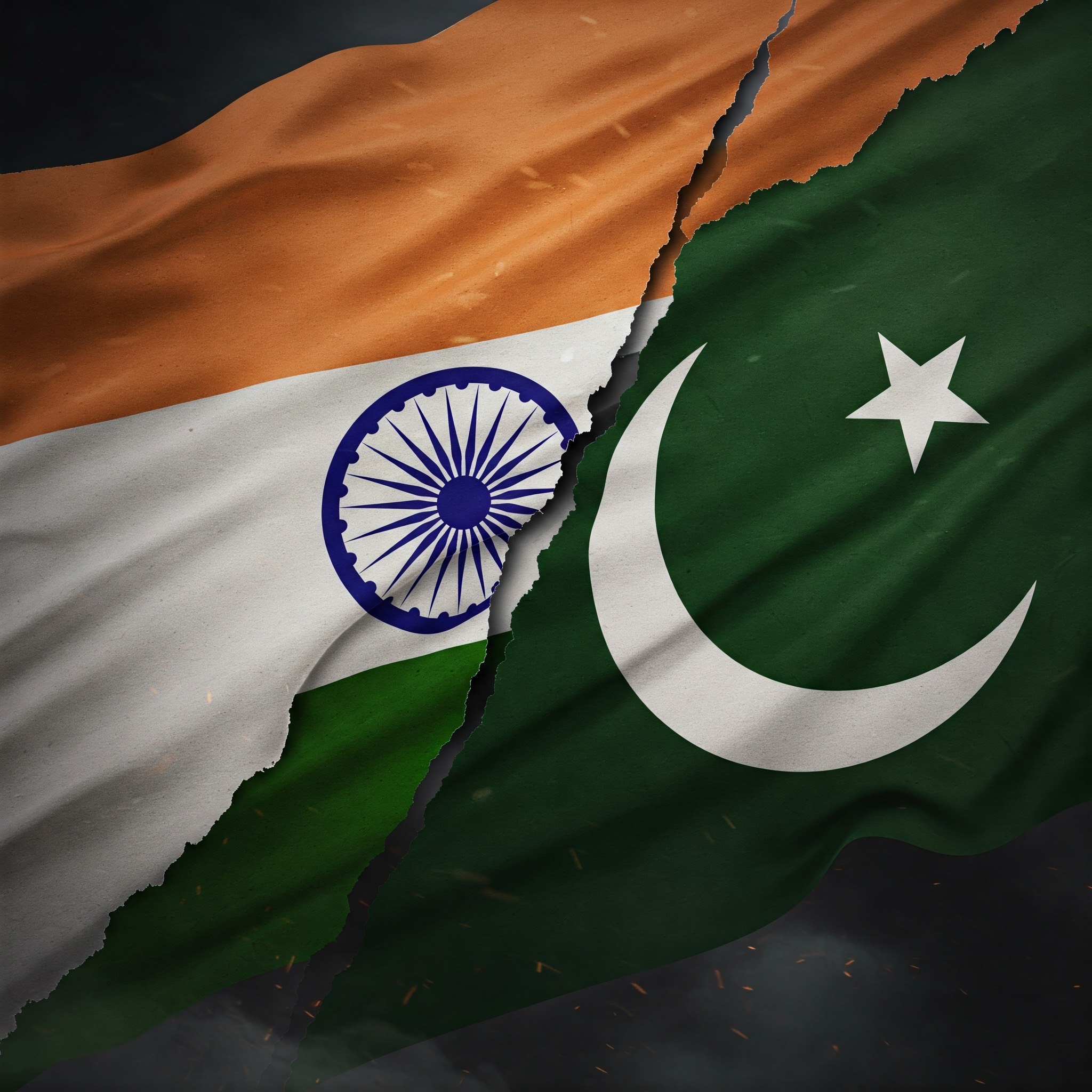- Escalation and Retaliation: Following a deadly militant attack on tourists in Indian-administered Kashmir, India launched retaliatory missile strikes deep into Pakistan-controlled territory, targeting alleged militant infrastructure. Pakistan strongly condemned the strikes as an “act of war” and vowed a response.
- The Contested Kashmir Region: The conflict stems from the disputed Kashmir region, divided between India and Pakistan after the 1947 partition. Both countries claim the entire territory, leading to multiple wars and ongoing tensions. India bases its claim on a legal accession, while Pakistan advocates for self-determination for the Kashmiri people.
- High Stakes and Uncertain Future: The international community has expressed grave concern over the escalating tensions between the nuclear-armed neighbors and urged de-escalation. With Pakistan vowing retaliation, the risk of a broader conflict is significant, carrying potentially catastrophic regional and global consequences.
India Launches Retaliatory Strikes Inside Pakistan After Deadly Kashmir Attack
Tensions between India and Pakistan have dramatically escalated following a deadly attack on tourists in Indian-administered Kashmir and subsequent retaliatory missile strikes by India deep within Pakistani territory. The attack, which occurred on April 22, 2025, in the popular tourist destination of Pahalgam, resulted in the deaths of 26 people. India swiftly blamed Pakistan for backing the militants responsible for the attack, a charge vehemently denied by Islamabad.
In response to the Pahalgam incident, India launched a series of missile strikes on Wednesday, May 7, 2025, targeting what it claimed were militant infrastructure inside Pakistan and Pakistan-administered Kashmir. Dubbed “Operation Sindoor,” the Indian action reportedly hit multiple locations, including areas near the border in Pakistan’s Punjab province and deeper within Pakistan-administered Kashmir. Indian officials stated that the strikes targeted key hubs of Lashkar-e-Taiba, Jaish-e-Mohammed, and Hizbul Mujahideen. Pakistan confirmed that strikes had occurred on its territory, including in Muzaffarabad, the capital of Pakistan-administered Kashmir, but denied the presence of terrorist camps.
Understanding the Contested Region
The heart of the ongoing conflict lies in the disputed region of Kashmir, a former princely state with a Muslim-majority population. Following the partition of British India in 1947, the Maharaja of Jammu and Kashmir initially chose to remain independent. However, an invasion by tribal militias, allegedly backed by Pakistan, led the Maharaja to sign the Instrument of Accession, formally joining India.
This act of accession is the basis of India’s claim over the entire region. However, Pakistan disputes this, arguing that the accession was obtained under duress and that the people of Kashmir should have the right to self-determination through a UN-mandated plebiscite.
The first India-Pakistan War (1947-1948) resulted in the division of Kashmir along a ceasefire line, which later became known as the Line of Control (LoC). This line effectively separates the region into India-administered Kashmir and Pakistan-administered Kashmir. India considers its administered portion an integral part of its territory, while Pakistan refers to its administered area as Azad Jammu and Kashmir. China also controls a smaller portion of the former princely state, known as Aksai Chin, which borders Ladakh (in India-administered Kashmir).
Background to the Current Conflict
The relationship between India and Pakistan has been fraught with tension and conflict since their independence. They have fought three major wars (1947-48, 1965, 1971) and a limited conflict in Kargil in 1999, with Kashmir being the central point of contention in most of these conflicts.
Since the late 1980s, India-administered Kashmir has witnessed a sustained armed insurgency against Indian rule, with India consistently accusing Pakistan of providing material and logistical support to these militant groups operating across the LoC. Pakistan has denied these allegations, stating that it only provides moral and diplomatic support to the Kashmiri people’s struggle for self-determination.
In recent years, there have been periodic escalations in tensions, often triggered by attacks in India-administered Kashmir. Notable incidents include the 2016 Uri attack, which led to Indian “surgical strikes” across the LoC, and the 2019 Pulwama bombing, which prompted Indian airstrikes deep inside Pakistan at Balakot. The current Indian retaliation appears to be broader in scope and deeper in its penetration into Pakistani territory compared to these previous incidents.
Global Reactions
The escalating tensions have drawn widespread concern from the international community. Several nations and international organizations have called for restraint from both India and Pakistan and urged a de-escalation of the situation through diplomatic dialogue.
China, a close ally of Pakistan and a neighbor of both countries, has expressed its concern and called for both sides to exercise caution and avoid any actions that could further destabilize the region. The United Nations has also issued statements emphasizing the need for peaceful resolution and urging both countries to adhere to international norms and agreements.
Several Western nations have echoed these calls for de-escalation, highlighting the potential for a dangerous conflict between two nuclear-armed states. There is a general consensus within the international community that dialogue and diplomacy are the only viable paths to resolving the long-standing issues between India and Pakistan.
What’s Next and the Stakes
The immediate future remains highly uncertain and fraught with risk. Pakistan has strongly condemned the Indian strikes and vowed a “befitting reply,” raising the specter of further military action and a potential cycle of retaliation. Experts believe that some form of Pakistani response is likely, which could range from similar surgical strikes to intensified firing along the Line of Control.
The stakes in this current crisis are exceptionally high. Both India and Pakistan possess nuclear weapons, and any large-scale conflict could have catastrophic consequences for the region and beyond. The potential for miscalculation or unintended escalation is a major concern for the international community.
Furthermore, the ongoing tensions could have significant geopolitical ramifications, impacting regional stability and potentially drawing in other global powers. The ability of both India and Pakistan to exercise restraint and engage in meaningful diplomatic efforts will be crucial in preventing a further descent into a dangerous and unpredictable conflict. The world watches with bated breath as these two nuclear-armed neighbors navigate this perilous juncture.














